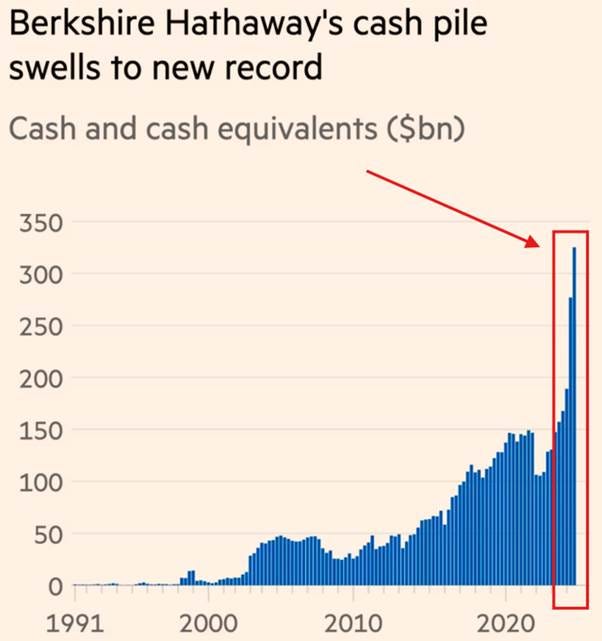Why are the US stock markets falling? The S&P 500 has fallen 10% from its Feb 19th high.
This is a question that a lot of people are asking. It is not one we usually spend much time on as it is mostly a pointless exercise.
The easy, and arguably correct and sufficient answer, is “That is what markets do. They go up and they go down. Mr Market is a crazy fellow.” That’s it. End of story.
However, people are usually satisfied with such a response and commentators do not limit themselves to that. They need to get clicks, generate viewers, and sell newspapers.”
We will attempt a more reasoned answer. There are several likely factors.
The first is valuations. We spend most of our time doing bottom-up fundamental analysis of stocks. This includes trying to come up with a valuation of individual equity securities.
For the last six months, we have noted that almost all stocks we looked at were overvalued. We did not add anything to our portfolio.
By mid-January, our portfolio was over 30% in cash for reasons we have discussed before. Market rose for a few weeks more before falling. We were early but arguably not wrong.
Valuations is usually a good answer to explain market moves. However, it is not a complete answer. Fundamental Valuations have been high for a year or more but why is the market only falling now?
Again, arguably the correct answer is “Mr Market is a crazy fellow.”
Investors had been betting on a “Trump bump.” Stocks did well during the first Trump term, boosted by tax cuts early on and were tariffs and other missteps did not negatively affect markets
Investors thought Trump 2.0 would be the same and boost economic growth and corporate profits.
The growth in the fiscal deficit means there is no room for more tax cuts.
Some of us who worried about tariffs and their potential impact on inflation and global trade volumes, were told they were only a negotiating tactic and would not be implemented at scale.
Markets have slowly come to realise that Trump 2.0 may be very different to Trump 1.0.
Trump 2.0 is about a few key things.
They want to reduce the twin deficits: the US fiscal deficit (and the accumulated government which has been used to fund the deficits over the years) and the US global trade deficits should fall.
They want to boost economic growth by growing investment in manufacturing, infrastructure and energy (“drill baby drill”).
The twin deficit problem has been around for a long time. The Us last had a trade surplus in 1975. Large scale fiscal deficits started with the Reagan administration and the last, short-lived, budget surplus was in 2001.
The US has long been a net importer of good and services
For decades, governments have spent much more than their revenues. The fiscal deficit grew relentlessly under George W. Bush, Obama, Trump 1.0 and Biden.
The twin deficits represent huge imbalances and should have been addressed years ago. Trump 2.0 is right to focus on them.
The administration believes the trade deficit is due to unfair trade practices particularly tariffs against US exports. The weapon of choice is to impose much higher tariffs on imports.
The fiscal deficit will be tacked by slashing government spending by using DOGE under Elon Musk.
The tariffs are designed to encourage US and foreign companies to expand manufacturing in the United States. Industrial investment in will be boosted by lower energy prices and lower interest rates.
This is the Trump 2.0 plan to reshape the US economy in the long run. A reshaping is needed because the global trends last fifty have not worked well for USA.
Manufacturing and growth have been much faster in China and the rest of the world and the US became weak because it exported jobs and imported goods (weakening the US working and middle class).
The US middle class and working class has been hit. Many of these people do not believe globalisation works for them and voted for radical change
Trump 2.0 means reversing the trends for the last fifty years towards higher deficits and globalisation.
It is an America First (and damn the rest of the world) policy.
This policy does not care too much about short term stock price movements.
Trump 2.0 requires lower US interest rates (and bond yields), lower energy prices and re-shoring of manufacturing investment and activity.
A short-term recession would be useful for lower interest rates and lower energy prices but negative for stock prices.
The chart below shows the difference between Trump 1.0 and Trump 2.0 in term of the impact on financial markets.
Trump 2.0 has been negative for US stocks, but has boosted Treasury bonds (and hence reduced yields), Gold and European stocks with the German Dax Index up 20% this year. Perhaps MAGA stands for Make Germany Great Again (!)
Conclusions
We never believed in the “Trump Put”. Any investment strategy based on the premise the government will not let the market fall is flawed.
The end of the Tump put (if it ever existed) is a good thing.
The twin-deficit problem has been ignored for too long and needs to be tackled. It will need unpopular decisions and may lead to lower growth or recession in the USA in the short-term.
Investors should ignore politics and not worry about the direction of the market. They should look at fundamental and valuations.
One man who has been doing that for over seven decades is Warren Buffett at Berkshire Hathaway.
He has been selling down stocks and raising cash. His cash holding currently is nearly $350bn which is about 35% of total assets.
He will be watching the stock market declines with interest. If values collapse further and valuations fall significantly, the 94-year old Buffett has the resources to buy assets cheaply again.
No matter how small our assets, all long-term investors should aspire to do the same.




